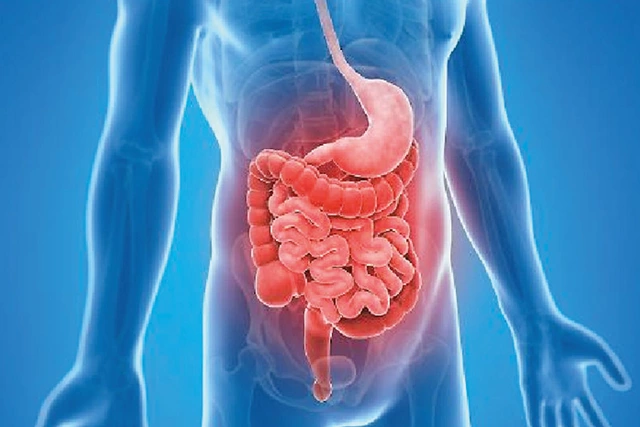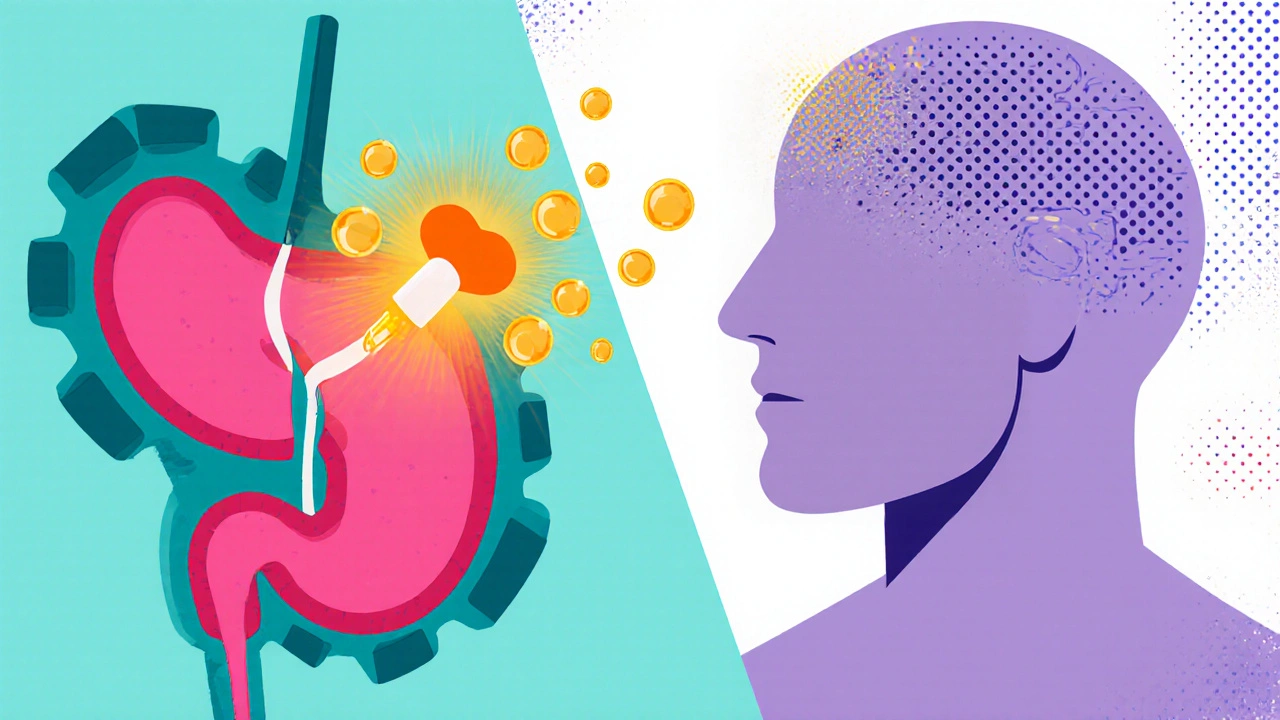GLP-1 Agonists for Weight Loss: Real Benefits Beyond Blood Sugar Control
GLP-1 Weight Loss Calculator
Calculate Your Potential Weight Loss
Estimate your expected weight loss with different GLP-1 agonists based on your starting weight and treatment duration.
Estimated Weight Loss
Cost Estimate
Important Considerations
• Common side effects: Nausea, diarrhea, constipation
• Weight loss typically peaks in the first 6-12 months
• Cost can be significant (average $1,300/month)
• Results are maximized with 12+ months of consistent use
When you hear the term "GLP-1 agonist" you probably picture a diabetes pill, but the story has stretched far beyond blood‑sugar control. These drugs are now front‑and‑center in the fight against obesity, heart disease, and even some neurological problems. This guide walks through how they work, why they drive weight loss, the extra health perks, and the trade‑offs you should know before starting therapy.
What exactly is a GLP-1 receptor agonist?
GLP-1 receptor agonists are synthetic versions of the naturally occurring hormone glucagon‑like peptide‑1 (GLP‑1). When the hormone binds to its receptor in the pancreas and brain, it triggers three key actions: it boosts insulin release only when glucose is high, it dampens glucagon secretion, and it tells the brain you’re full. The first drug, exenatide (brand Byetta), hit the market in 2005, but the class has exploded with newer agents like semaglutide, tirzepatide, and liraglutide. All share the same core mechanism but differ in potency, dosing schedule, and the breadth of their approved uses.
Why do GLP-1 drugs cause weight loss?
The hunger‑curbing effect comes from two physiological pathways. First, GLP‑1 slows gastric emptying, so food lingers longer in the stomach and you feel satisfied sooner. Second, the drug acts on the hypothalamus, lowering the reward signals that normally trigger cravings for high‑calorie foods. Clinical trial data consistently show a 5‑15% drop in body weight after a year of treatment, with some agents pushing the loss even further.
Key GLP-1 agents and their weight‑loss track records
| Agent | Approved uses (2025) | Typical weekly dose | Average weight loss % (clinical trials) | Common side effects | 2024 US list price (per month) |
|---|---|---|---|---|---|
| Semaglutide (Wegovy) | Chronic weight management, Type 2 diabetes | 2.4 mg weekly | ≈14‑15 % | Nausea, diarrhea, constipation | $1,349 |
| Tirzepatide (Zepbound) | Weight management, Type 2 diabetes | 15 mg weekly | ≈20 % (obesity without diabetes) | Nausea, vomiting, mild GI upset | $1,299 |
| Liraglutide (Saxenda) | Weight management, Type 2 diabetes | 3 mg daily | ≈7‑8 % | Nausea, headache, dyspepsia | $1,150 |
| Dulaglutide (Trulicity) | Type 2 diabetes | 1.5 mg weekly | ≈5‑6 % | Nausea, abdominal pain | $950 |
| Exenatide (Byetta) | Type 2 diabetes | 5 µg twice daily | ≈4‑5 % | Nausea, injection site reactions | $850 |
Beyond the scale: cardiovascular and metabolic perks
Weight loss isn’t the only win. Large outcome trials have shown that GLP‑1 agonists cut major adverse cardiovascular events by roughly 12‑18 % in patients with existing heart disease. A 2024 Nature Cardiovascular Research analysis by Dr. Eric Polley linked the drugs to a 10 % lower all‑cause mortality risk in moderate‑risk patients. They also improve lipid panels-average LDL‑cholesterol drops of 8‑12 mg/dL-and modestly lower systolic blood pressure (about 3‑5 mm Hg). For people juggling diabetes and a heart condition, the dual benefit reshapes treatment guidelines.

Who benefits most? Ideal patient profiles
Guidelines from the American Diabetes Association now place GLP‑1 agonists as first‑line therapy for anyone with Type 2 diabetes who also has obesity (BMI ≥ 27 kg/m²) or established cardiovascular disease. Real‑world data from the Washington University veteran cohort (2 million records) revealed additional perks: a 23 % lower seizure incidence and a 17 % drop in substance‑use disorder rates compared with traditional diabetes drugs. People with pre‑diabetes, non‑alcoholic fatty liver disease, or even early‑stage Alzheimer’s are being evaluated for off‑label use, but the evidence there is still emerging.
Side‑effects and practical hurdles
Gastrointestinal upset remains the most common complaint-30‑50 % of users experience nausea, vomiting, or diarrhea, especially during dose‑escalation. Most clinicians start with a low weekly dose (e.g., semaglutide 0.25 mg) and slowly titrate over 4‑5 months to improve tolerance. Rare but serious concerns include pancreatitis (≈0.5 % incidence) and gallbladder disease. Cost is a bigger barrier for many: the average monthly list price tops $1,300, and insurance coverage is uneven. In 2024, 58 % of patients reported out‑of‑pocket hurdles, leading some to skip doses or stop therapy entirely.
How to start a GLP‑1 regimen: a step‑by‑step guide
- Get a prescription from a clinician experienced with obesity pharmacotherapy.
- Discuss your full medical history, especially any history of pancreatitis, thyroid cancer, or severe gastrointestinal disease.
- Begin the titration schedule recommended for the chosen agent (e.g., semaglutide 0.25 mg weekly, increase every 4 weeks).
- Learn the injection technique-most pens have a click‑and‑inject system and a 30‑day needle supply.
- Pair the medication with a structured lifestyle plan: reduced‑calorie diet (500‑750 kcal/day deficit) and 150 minutes of moderate aerobic activity each week.
- Schedule follow‑up visits at 4‑week intervals to monitor weight, glucose, and side‑effects.
- If nausea is severe, pause dose escalation and consider anti‑emetic support or a slower titration.
Sticking with the program for at least 12 months maximizes the chance of keeping the weight off; discontinuation often leads to a 50‑70 % regain within a year.
Real‑world stories: what users say
On Reddit’s r/semaglutide community (≈152 k members), many report losing 1-2 lb per week at the start, tapering to 0.5 lb per week after six months. One user, "HealthyJourney88," praised the drug for "dramatic reduction in cravings" and noticed a drop in A1c from 8.5 % to 6.4 % without changing diet much. Conversely, "WeightLossWarrior" highlighted constant nausea that made work impossible, emphasizing the need for slow dose escalation.
Harvard Health warned of the "Ozempic face" effect-accelerated skin laxity and facial volume loss-in about 42 % of long‑term users. Dermatologists suggest using moisturizers, facial massages, or occasional collagen‑boosting treatments to mitigate the cosmetic impact.
Future directions: what’s on the horizon?
Oral semaglutide is already on the market (Rybelsus) but next‑generation formulations aim for higher bioavailability and once‑daily dosing at 50 mg. Researchers at Novo Nordix are testing an implant that releases a GLP‑1 agonist for up to a year, potentially eliminating injection anxiety.
Triple‑agonist molecules that hit GLP‑1, GIP, and glucagon receptors are in phase 2 trials and could push average weight loss past 25 % while also tackling non‑alcoholic steatohepatitis (NASH). Analysts at J.P. Morgan predict the overall GLP‑1 market to hit $100 billion annually by 2030, driven by expanding label indications for heart failure, chronic kidney disease, and neuro‑degeneration.
Bottom line: are GLP‑1 agonists right for you?
If you live with Type 2 diabetes and carry excess weight, these drugs are arguably the most effective medical option available today-far better than sulfonylureas or insulin, which typically add weight. Even for non‑diabetic obesity, semaglutide and tirzepatide have demonstrated clinically meaningful loss that rivals bariatric surgery in some trials. However, you need a supportive medical team, a plan to manage GI side‑effects, and a realistic budget or insurance coverage.
Think of GLP‑1 therapy as a partnership: the medication handles the biology, while diet, exercise, and behavioral coaching keep the results sustainable. If the cost or side‑effects feel prohibitive, discuss alternative options like higher‑intensity lifestyle programs or newer, lower‑dose formulations that may become available soon.
Quick reference checklist
- Confirm indication (Type 2 diabetes, obesity, or both).
- Choose agent based on dosing convenience and weight‑loss goals.
- Start low, go slow-follow manufacturer titration schedule.
- Monitor weight, A1c, blood pressure, and GI tolerance every 4 weeks.
- Arrange insurance assistance early (e.g., Novo Nordisk’s Norditrac).
- Pair with nutrition counseling and regular physical activity.
- Plan for a minimum 12‑month treatment to lock in benefits.
Can I use GLP‑1 agonists if I don’t have diabetes?
Yes. Both semaglutide (Wegovy) and tirzepatide (Zepbound) received FDA approval for chronic weight management in adults with a BMI ≥ 30 kg/m², or ≥ 27 kg/m² with at least one weight‑related condition, even without diabetes.
How quickly can I expect to see weight loss?
Most people notice a 1‑2 lb drop per week during the first 8‑12 weeks. The rate slows after that, but steady loss continues for up to a year if the dose is maintained.
Are the gastrointestinal side effects permanent?
No. Nausea, vomiting, and diarrhea usually peak during the titration phase and improve within 4‑6 weeks of reaching a stable dose. Slower dose increases can minimize severity.
What’s the impact on cardiovascular health?
Large outcome trials (e.g., SUSTAIN‑6 for semaglutide, SURPASS‑4 for tirzepatide) showed a 12‑18 % reduction in major adverse cardiovascular events compared with placebo in high‑risk patients.
Will I need to stay on the drug for life?
To maintain the weight loss, most clinicians recommend continuing therapy long term. Stopping the drug often leads to weight regain within 6‑12 months.






2 Comments
Olivia Harrison
October 24 2025Great overview! If you're thinking about starting a GLP‑1, the first thing to nail down is a clear titration plan-most doctors begin with a tiny dose and bump it up every few weeks. Pairing the medication with a modest calorie deficit (around 500 kcal/day) and regular walks makes the weight‑loss curve a lot smoother. Keep an eye on any nausea; a slow ramp‑up usually tames it, and staying hydrated helps. Most folks see the biggest appetite drop in the first month, so that's a good time to lock in healthy habits. Remember, the drug handles the biology, but sustainable results still need your daily choices.
Bianca Larasati
November 8 2025Wow, this stuff is a game‑changer! Imagine shedding pounds while your heart gets a boost – it’s like the ultimate double‑whammy. The hype isn’t just marketing; those trial numbers are insane, especially with tirzepatide. If you can swing the cost, strap in and watch the scale melt away – you’ll thank yourself later!